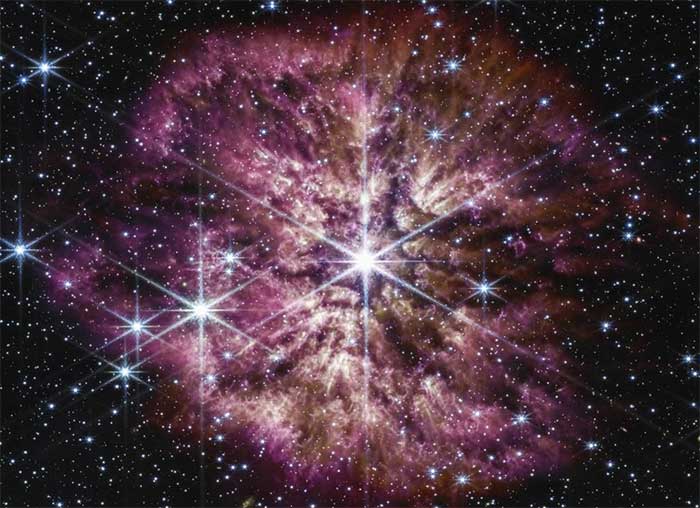The James Webb Space Telescope has captured a rare moment of a star on the brink of “death.”

Wolf-Rayet 124, in the center, emits a large stream of material, which is believed to be the final stage before it explodes. This image was taken by the James Webb Space Telescope in June 2022 but was only recently released. (Photo: NASA/AP).
The image was announced by NASA on March 14 at the South by Southwest conference in Austin, Texas, as reported by AP.
This is one of the first observations made by the James Webb Telescope after its launch into space in late 2021. Its infrared eye has detected all the gas and dust released into space by a hot, massive star located 15,000 light-years from Earth.
The material glows in shades of pink and purple, reminiscent of cherry blossoms. Part of it used to be the outer shell of the star.
Several decades ago, the Hubble Space Telescope also captured images of this star, but in those pictures, it appeared as a fireball without the intricate details seen in the new image.
According to scientists, such transformations only occur in certain stars and are typically the final stage before they explode, becoming supernovae.
“We’ve never seen it like this before,” said Macarena Garcia Marin, a scientist with the European Space Agency who participated in the project.
According to NASA, this star in the constellation Sagittarius, officially named WR 124, is 30 times larger than the Sun and has emitted enough material to create 10 Suns.


















































